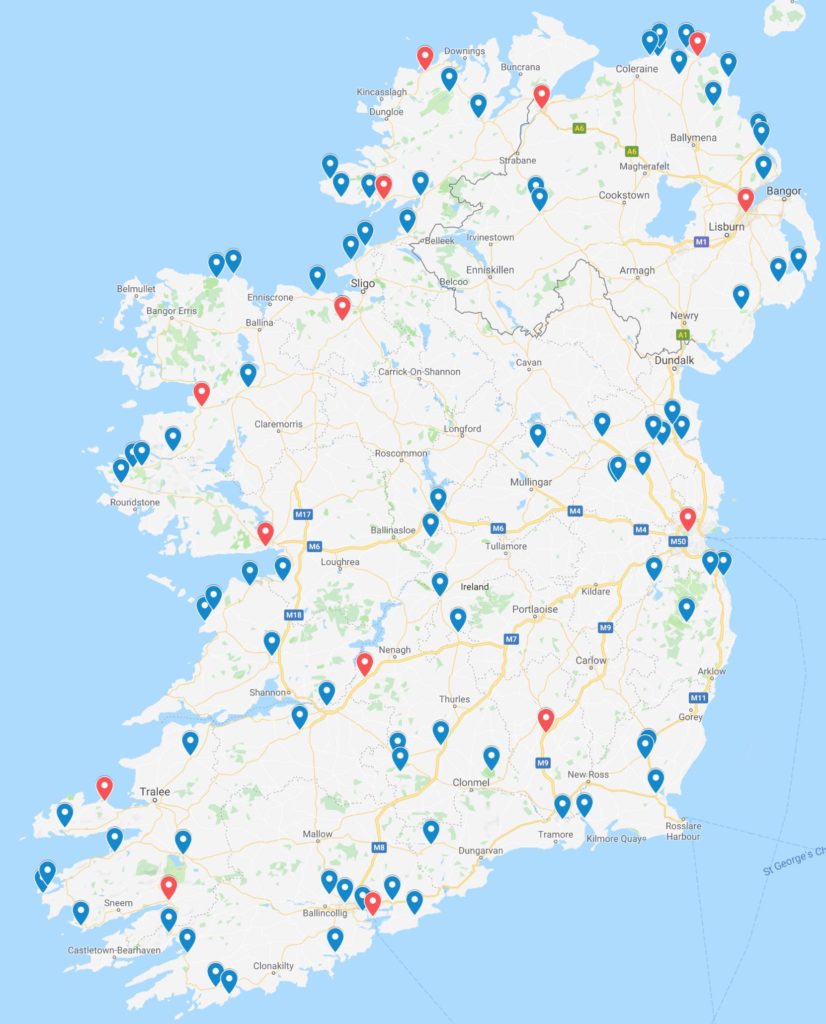
I typed in the title to this blog and then stared at the empty screen. How can I explain to you what I’ve seen in Derry?
If you’re over 30, you’ve likely heard the words IRA, Belfast, and violence in the same sentence. But have you been following what’s happening in Northern Ireland over the years? I wasn’t. It was something I was going to look into one day, but never did—until now.
Before this trip, I couldn’t find a source on Northern Ireland’s Troubles that was intelligible to the uninitiated. They were heavy, scholarly works, and I couldn’t follow the morphing of paramilitary groups on both sides of the conflict as they split, tweaked agendas, and modified methods.
I knew Belfast wasn’t the only city in Northern Ireland to have troubles, but I didn’t realize how bad it was in Derry. On our first day in the city, we walked to the grocery store—right through the Bogside, the heart of the historic unrest. The murals were everywhere. I didn’t understand them, but the pain was obvious.
During our week, this is what I learned. It’s not comprehensive, but it’s a start.
- In the 17th century, Scots were planted in Ulster to establish an English/Protestant base in an Irish/Catholic country. Protestants were given the political upper hand and managed to keep it, although greatly outnumbered by Catholics, through four centuries.
- In the 20th century, the Catholics were still stuck in the bogland because the Protestant government thwarted every effort they made to improve their lives.
- Unemployment was as high as 20%, yet new factories were built elsewhere.
- The Protestant-controlled housing authority made it almost impossible for Catholics to obtain new housing because voting laws granted only one vote per residence. Multiple generations under one roof had only one vote. Business owners and owners of multiple properties (Protestants, for the most part) were awarded one vote per residence or business.
- Gerrymandering was rampant to prevent Catholics from diluting Protestant voting precincts.
Essentially, Protestants controlled Northern Ireland’s parliament and government agencies and were attempting to frustrate Catholics to the point of emigration—either to the Republic or abroad. By the 1960s, Catholics were still here and still fed up. They began to organize non-violent demonstrations patterned after Gandhi and Martin Luther King, Jr. To the shock of the world, their peaceful protests were met with bullets.
In 1972 the atrocities in the Bogside reached a peak on Bloody Sunday. Fourteen unarmed protesters were shot and killed—and many more wounded—while fleeing from British soldiers or helping the wounded. Official reports claimed they were armed. Early investigations found the deaths justified.
In 2010 a twelve-year investigation found that none of the victims was armed, and none of the deaths was justified. David Cameron, UK Prime Minister at the time, apologized to the families of the deceased on behalf of the British government. There are many more investigations in the works, and many more wounds to heal.
As difficult as it is, it’s time to own up, forgive, extend a hand, and move forward in peace. Northern Ireland has suffered long enough.



























